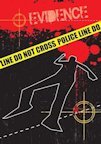Yesterday the medical quacks who run a website called Doctors for Responsible Gun Ownership (DRGO) decided to demonize physicians who regard gun ownership as a health risk by descending to the lowest, possible level of pandering to the lowest, intellectual denominator – a style promoted successfully by our soon-to-be President which now serves as the rhetorical burnishing for the thoughts of every jerk, dope and creep climbing out from underneath their rock to bask in the light of the Age of Trump.
What I am referring to is a scurrilous attack on an up-and-coming public health researcher, Bindu Kalesan, whose group continues to publish articles on guns and gun violence that really pisses Gun-nut Nation off. And the reason their work attracts such negative attention from the Jerks and Dopes Brigade is because Dr. Kalesan and her colleagues make no secret of the fact that they are not enamored of guns. Kalesan even comes down out of the Ivory Tower to serve as the Vice President of a neat GVP organization which attempts to “assist in the funding required to promote mental and emotional healing” of gun victims, something which the medical quacks who slither around the DRGO website know and care absolutely nothing about.
What got the so-called physicians who spearhead the Jerks and Dopes Brigade so hot and bothered was an article published in a peer-reviewed medical research journal that correlated school shootings with such factors as handgun background checks, state-level mental health expenditures, education funding and gun-ownership rates, among others. By the way, the DRGO claims that this is the first of a series of articles that will be produced by the DRGO Publication Review team which consists of ‘medical scientists and statisticians,’ although none of these august individuals is actually identified by name.
And to show you DRGO’s commitment to medicine and science, the first thing that caught my eye was their finding of a major error in Kalesan’s piece, namely, that she neglected to mention a school shooting which occurred in Boston on April 18, 2013. Now if you want to characterize this event as a ‘school shooting’ you are either delusional or dumb, or both. Because this happened to have been a shooting of a campus cop at MIT by the two Tsarnaev brothers (the Marathon Bombers) who were trying to evade a citywide manhunt and might have been stopped by the cop after their pictures were broadcast all over the place by the FBI. If this purposeful misuse of evidence constitutes what the DRGO feels represents the work of statisticians and scientists on their behalf, then there’s really no sense in taking them seriously at all.
But the misrepresentation of evidence is not the lowest degree to which this bunch of fools can sink; in fact, they go one step further (or perhaps I should say ‘lower’) in their attempt to guttersnipe at Kalesan’s work and name. Because they also turn their attention to the journal in which this article was published – Injury Prevention – and note that the editorial staff is “dominated by foreigners unfamiliar with and likely hostile to America’s constitutional right to keep and bear arms.” Note the use of the word ‘foreigners,’ and it’s not by accident that this comment is placed in an attack on a researcher who, by dint of her name, might also be part of the horde that’s coming over here to destroy everything about America that’s good and right.
This is what I meant above when I talked about how disgustingly low the DRGO creeps have sunk. It’s not bad enough that they use their so-called medical credentials to spread absolute falsehoods about the non-risk from guns. What they are now beginning to do is resort to the same, malicious and dangerous racism and hatreds which infected the Presidential campaign. In the process they not only demonize evidence-based research upon which all medical knowledge and practice depends, but show themselves to be nothing more than crude hucksters for the gun industry hiding behind medical degrees.


Recent Comments